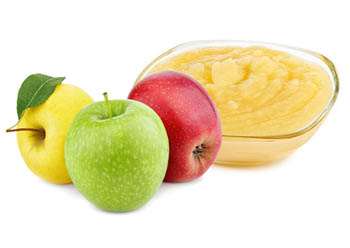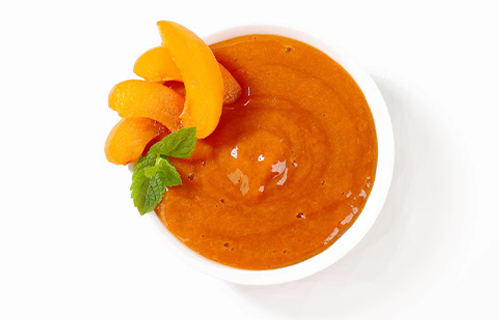
APRICOT PUREE
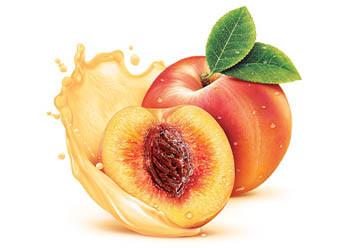
peach puree
Peaches are round fruits that range in size from 5 to 9 centimeters in diameter. They are distinguished by a downy fuzz covering their thin skins. The fruits mature from green to yellow and then orange with deep red blushing on the side facing the sun. The deep orange flesh is aromatic and juicy and may or may not cling to the hard, almond-shaped central stone. Peaches offer a sweet flavor, balancing sugar and acid for a well-rounded flavor.

STRAWBERRY PUREE
Strawberries are small to medium-sized fruits, ranging in size from 2 to 5 centimeters in diameter, and have a plump cordate shape with broad, curved shoulders tapering to a blunt or pointed, narrow tip. Each Strawberry will vary in appearance, size, aroma, and flavor, depending on the variety, and is capped with a tuft of small lanceolate green leaves growing in a circular formation. Despite their berry moniker, it is important to note that Strawberries are not true berries and are labeled as false fruits or pseudocarps. The brightly colored, fleshy portion of the Strawberry is known as a receptacle to hold the ovaries, also known as achenes, of the flower. These ovaries are the tiny yellow-brown to white specks seen on the outside of the Strawberry, and they are often referred to as seeds. One Strawberry can have over 200 ovaries on its surface, and each ovary contains a single seed. Strawberries can vary in color, appearing in shades of bright red, dark red, pink, peach, to white, and the fruits develop a faint sheen when ripe. The fruit's surface is delicate, easily damaged, and soft. Underneath the surface, the flesh is typically aqueous, firm but tender, and sometimes crisp with a succulent nature. The seeds on the outside also provide a subtle crunch. Strawberries release a fragrant, fruity aroma and must be picked when mature, as they will not continue to ripen after being harvested. Depending on the variety, they can be syrupy-sweet, fruity, sweet-tart, candy-like, to sweet with balanced acidity.
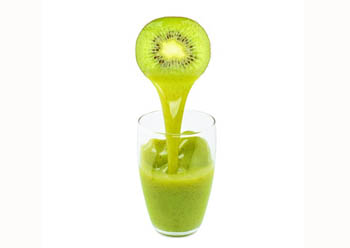
KIWI PUREE

FIG PUREE
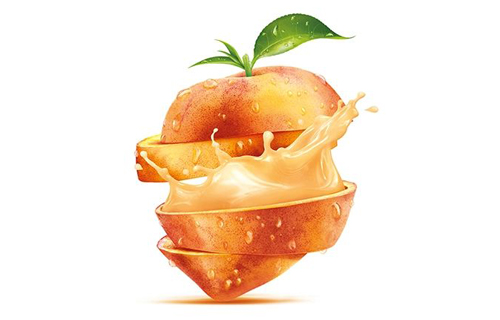
WHITE PEACH PUREE
Peach is a very healthy fruit that contains a big amount of antioxidants and vitamin C. The result of the careful processing of the fruit is a high-quality Peach Puree. Peach Puree can be used to create many different food and beverage products such as cakes, cookies or fruit juices.

MANGO PUREE
Mango is a tropical fruit which is native to India although today, it is also cultivated in many countries all around the world. It is called “the peach of the tropics” or “ king of the fruits” and it is a member of the Anacardiaceae family. Mango is grown in temperate and warmer climates, it weighs between 150 g and 2 kg, it is oval-shaped and its skin is smooth and quite thick. Mango skin can show different colours: yellow, green, violet or red.

